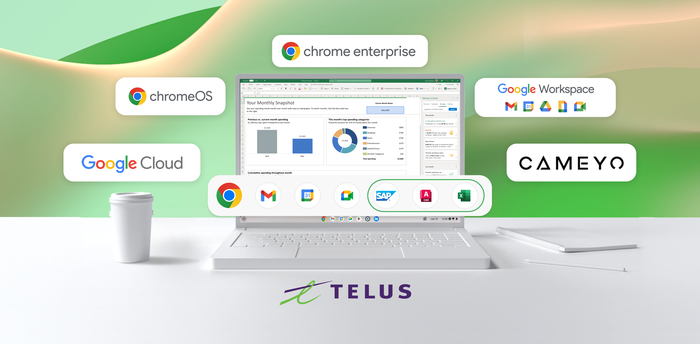5 Google IT tips for driving and sustaining Chromebook adoption

Frances Angulo
Program Manager for Chromebook Adoption
Like any other enterprise, we look to technology investments to improve operational efficiency, reduce costs, and increase productivity. At Google, we love Chromebooks for the same reasons as many of our customers—they’re secure by design, they minimize distractions to help users stay focused, and they’re a smart IT investment.
Like any enterprise investing in technology, user adoption is a priority for us. From 2017 to 2018, we nearly tripled the number of Chromebooks used by Alphabet employees—and we learned a lot in the process. If your organization is switching to Chromebooks, here are five tips we recommend as you build out your plan.
1. Ask your employees what they want and need from their devices
You have many choices when selecting devices. Naturally, things like performance, specifications and the kind of work your users do on their devices will top your list of considerations. But it’s essential to keep in mind the priorities your users have as well. One of the best ways to learn them is to ask.
At Google, we did just that. Our thousands of users told us they wanted lightweight devices to fit workdays where they’re frequently mobile, with long battery life, a touch screen, and a high-quality hardware look and feel.
They also wanted to feel connected to their team members in their device choice—IT managers noticed that when most members of a team adopted a particular device together, other team members were more likely to switch. By asking employees what they need, IT managers can ensure that employees are comfortable and supported with their new device at the outset.
2. Decide whether Chromebooks should be mandatory or a choice
After deciding which devices to introduce into your organization, you should determine whether you want Chromebook adoption to be a business mandate or an employee choice. A business mandate can make adoption faster and easier, but can sometimes be challenging for users getting up to speed with new devices. Giving users flexibility in device choice gives them room to make the switch on their own terms, but can add complexity for IT teams.
If you opt for a business mandate, consider the change management process, starting with your best candidates for adoption, and use team feedback to refine your strategy—you can read more on how we did it at Google in this blog post. I also recommend providing plenty of training and transition resources.
If you decide to let people choose their devices, there are lots of ways you can influence employee adoption. For example, you can debunk Chromebook myths and expand the device footprint through flexible trade-in policies or a Grab and Go with Chrome Enterprise program that let them experience the high-end build quality and power for themselves.
3. Train first-time users to be Chromebook pros
After onboarding thousands of Googlers on Chromebooks, we’ve learned a thing or two about quickly getting users up and running. Here’s a quick overview of the timeframe we’ve found works best for gradually introducing users to information:
- Week 1: Focus on onboarding users with their most critical applications—email, calendar, internal apps, and access to internal systems.
- Week 2: Help users personalize their Chromebooks by showing them how to customize workflows and add their favorite apps and personal accounts.
- Week 3 (and beyond): Share lots of resources to help users be productive—hot keys, pro tips, FAQ, and advanced training are all great options.
Proper onboarding for first-time users will go a long way toward making sure your employees are productive and successful on their new devices.
4. Monitor user adoption going forward
We recommend developing a dashboard that can answer some of the biggest user adoption questions about new users. We suggest tracking things like:
- How many users have a Chromebook and how many use it as their primary device.
- Why users leave Chrome OS.
- How many users choose Chromebook at device refresh.
- The Chromebook assignment rate for new employees.
- How Chrome OS stacks up against other platforms in your organization.
When developing a tracking tool, remember to include platform attrition. Insights from people who’ve left the platform can help you refine your overall targets and strategy.
5. Share your feedback with us
Improving user adoption also involves welcoming employee feedback and showing them that their insights matter. We encourage all of our customers to collect and escalate feedback from their users to Google.
Our goal is for people to be able to use the platform as much as possible. We want to help you figure out why people can’t use Chrome OS or don’t want to, and make Chrome OS the best possible platform for all users. If you run into recurring issues, file a Chrome bug with Google. You also can stack-rank and prioritize your requests.
Check out our Chromebook adoption kit
Planning to introduce Chromebooks to your organization? Our adoption kit is regularly updated and provides resources and a timeline with the steps we took to evaluate and deploy Chromebooks inside Google. Find it here.



